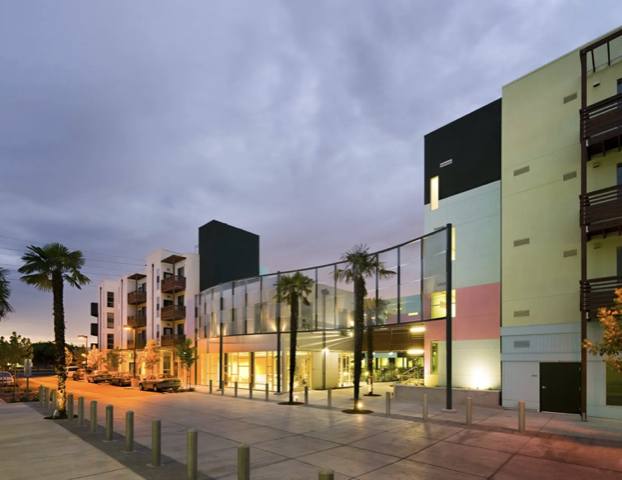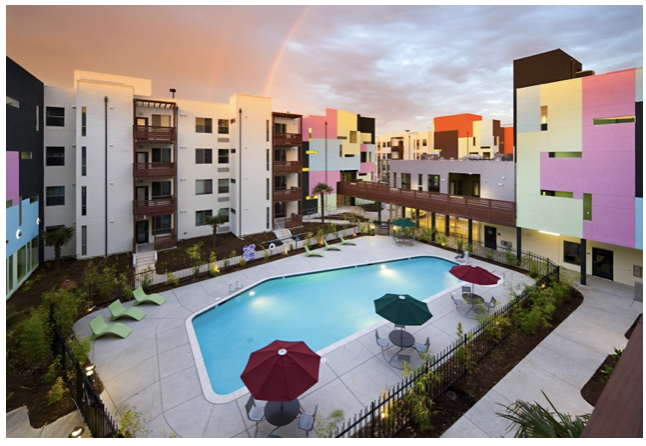
Housing is the foundation for healthy, strong communities. Stable, affordable housing is vital to good health, children’s education, the environment and the region’s economy. California and the Bay Area, specifically, grapple with a severe housing shortage. In the Bay Area, this is particularly felt by low-income communities of color, due to historic and systemic housing discrimination and structural and institutional market barriers in accessing credit and pathways to homeownership that produce the current housing.
In the last several years, San Francisco and San Jose have routinely topped the lists of most expensive places to live. Affordable housing was a concern before 2020, but the pandemic exacerbated a growing problem. In 2021, nine out of ten Californians consider housing affordability a problem, and nearly one in three Californians are considering leaving the state because of it, according to a March survey by the Public Policy Institute of California.
Affordable Housing Defined
Affordable housing is defined by the Department of Housing and Urban Development (HUD) as keeping housing costs below 30 percent of income, intended to ensure that households have enough money to pay for other nondiscretionary costs. Households who spend more than 30 percent of income on housing costs are considered to be housing cost burdened. One problem is that that many families try to reduce their housing costs by moving further away from job centers. But this simply increases their transportation costs — so a simple “affordable housing” metric might not capture the whole story.
Three crises
According to Matt Levin, the housing crisis is in reality three crises which stem from the same underlying issues but impact different segments of the population. The first and most urgent crisis is the 150,000 homeless Californians sleeping in shelters or on the streets. The second housing crisis involves the 7.1 million Californians living in poverty when housing costs are taken into account. While not homeless, 56% of these low-income Californians see more than half of their paychecks devoured by rising rents.
California’s third housing crisis affects a younger generation of middle-class and higher-income Californians. In the late 1960s, the average California home cost about three times the average household’s income. Now it costs more than seven times what the average household makes. High rents make saving for a down-payment much more difficult.
Housing Crisis in Numbers
There are only 35 affordable units available for every 100 extremely low-income households in the combined area of San Francisco, Alameda, Contra Costa, San Mateo and Marin counties, according to the report by the National Low Income Housing Coalition.
It’s even worse in the South Bay, where there are just 29 homes available for every 100 extremely low-income households in Santa Clara county, based on 2019 census data, which don’t capture the economic impact of the COVID-19 pandemic.

Three Ps Framework
Housing advocates believe that any solution to addressing the crisis will involve involve three high-level actions known as the three “Ps” of Housing: Production (building more homes for all income levels), Preservation (keeping existing stock of affordable housing), and Protection (tenant protections that address displacement and gentrification).
Challenges to housing production
The California Department of Housing and Community Development estimates the state needs to build 180,000 units of housing annually by 2025 to meet projected growth, well over 100,000 of what is being built today. Between 2011 and 2015, the Bay Area added over 500,000 new jobs, but built only 65,000 housing units.
Some factors leading to a shortage of housing production include:
- Cost of construction in California is substantially higher than other parts of the country
- Scarcity of land to build on (with today’s ineffective land use pattern and sprawl)
- Effective tactics by NIMBYs (not in my back yard) and BANANAs (build absolutely nothing anywhere near anything) to stall and halt new housing
- Long and uncertain project approval process
- Environmental tools used to stop good projects
The Bay Area’s massive housing shortage has resulted in increased homelessness in Alameda County by 43% between 2017 and 2019, and by 31% in Santa Clara County.
While there is a lot of finger pointing about the reasons for the crisis, it is imperative that everyone is at the table to consider solutions. It will take a partnership of public, private, philanthropic sectors to elevate the need to find bold solutions.
What can you do?
A lack of decent housing affects all of us – even those lucky enough to own a home. Each of us can play a role in reducing roadblocks to housing production. Here are some ways to plug in:
- Get a better understanding of the housing crisis. May is Affordable Housing Month> Check out various events in your region at sv@home, Housing Leadership Council, and other affordable housing organizations throughout the Bay Area.
- Each of our cities will update its housing plan this year and next. Find out what your city is planning and proactively participate in the discussions.
- Host housing circle conversations with your circle of friends/neighbors to better understand the impact of doing nothing – on our economy, our environment, our community and the future generations who wish to thrive in the Bay Area.
***************
Author Bio:
Anu Natarajan is an urban planner with experience in land use, housing, sustainability, placemaking, and community engagement. She has worked as a public agency planner, a planning consultant, and a designer. Anu served as Fremont\’s councilmember and vice-mayor for ten years. She has a deep understanding of policymaking at the various levels of government. Anu has been a board member for organizations including Smart Growth America, Stopwaste, ABAG’s Regional Planning committee, ABAG’s Placemaking committee, League of CA Cities’ Housing, Economic and Community Development Committee, Greenbelt Alliance, Transform CA, and SPUR San Jose.




